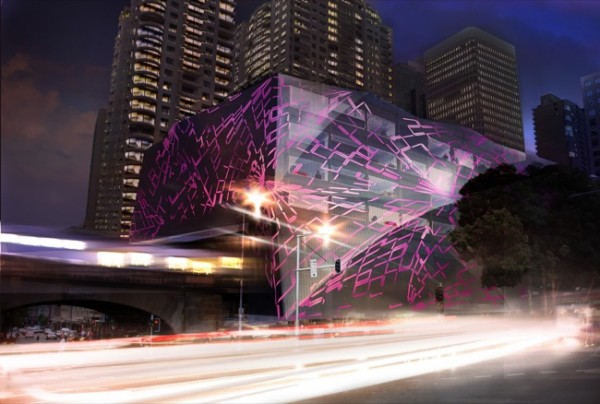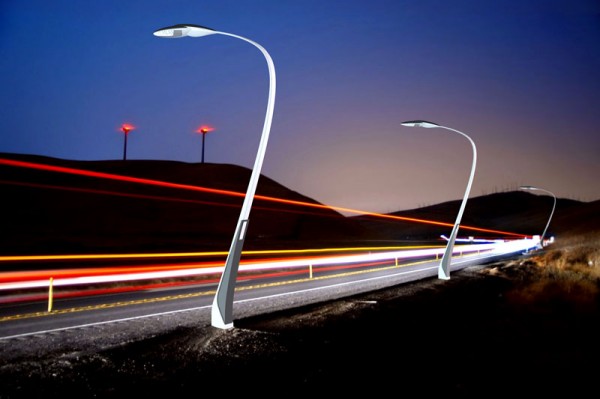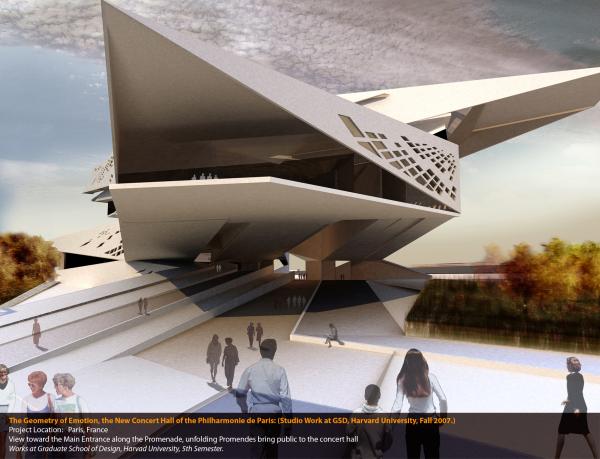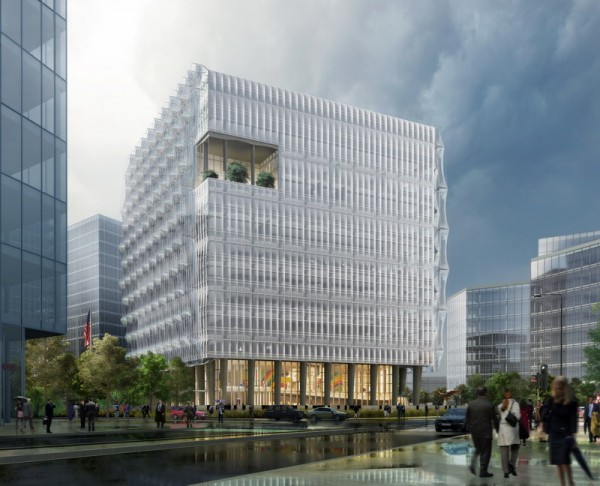The proposal from the Laboratory for Visionary Architecture (LAVA) to re-skin the University of Technology Sydney (UTS) tower in Sudney Australia has won the ZEROprize for Re-Skinning. The proposal aims to transform the identity of the brutalist-style high-rise and reduce its carbon footprint. LAVA has developed a simple, cost-effective and easily constructed building skin that forms a translucent cocoon to create a micro-climate. The skin can generate energy with embedded photo-voltaic cells, collect rain water, and improve the distribution of natural daylight. It can also use available convective energy to power the building’s ventilation requirements, reducing HVAC dependency. The skin is self cleaning and quite striking to the eye. The skin could be applied to other similar existing structures inexpensively, contributing to a low-cost, efficient way to beautify cities everywhere. Read the rest of this entry »
ZEROprize for Re-Skinning awards – University of Technology Tower in Sydney
Self-Sufficient Street Light
It is estimated that street lighting accounts for over 30% of all electricity purchased for most cities. Inefficient lighting wastes billions of dollars each year and can account for 28% of total greenhouse gas pollution produced by a municipality. The City of Sydney, Australia and others across the world are taking a strong look at converting the conventional street lights to more environmentally friendly technologies. Sydney estimates that if their trial is successful, low energy lights could reduce energy consumption by up to 50%. There is clearly a market for low energy street lights, but unfortunately, most of the designs have been uninspired. This self-sufficient street light breaks the mold. Read the rest of this entry »
Unfolding Sounds – Paris Concert Hall
Commissioned by the Philharmonie de Paris, this WA Community Awards 6th Cycle winner balances the strict needs of a world class concert hall, with the intricacies of the surrounding neighborhood and the grandeur of the City of Paris. The work is the product of Jungmin Nam, an Award Winning architect now Working at KVA , in Boston, MA. He completed the project while as a student at the Harvard School of Design. Read the rest of this entry »
New US Embassy in London
The United States Department of State recently announced that KieranTimberlake has won the design competition for the new, United States London Embassy. Ambassador to the United Kingdom, Louis B. Susman, and Acting Director of the Bureau of Overseas Buildings Operations, Adam Namm, remarked, “KieranTimberlake’s design meets the goal of creating a modern, welcoming, timeless, safe and energy efficient embassy for the 21st century. Their concept most fully satisfied the requirements outlined in the design competition’s mission statement. The concept holds the greatest potential for developing a truly iconic embassy and is on the leading edge of sustainable design.”
The core design challenge was to bring form to the core beliefs of American democracy – transparency, openness, and equality – and do so in a way that is secure, welcoming, and sustainable.
Located on the Nine Elms site in London, the site is to be transformed into an urban park and garden, designed as a spiraling form and providing strong pedestrian connections to mass transit and the proposed Battersea developments to the west. The park doubles as a security measure and is a welcome alternative to the walls, fences, and jersey barriers that have come to dominate American government buildings. Read the rest of this entry »
Peelback Bench
The park bench, much like other public, utilitarian furniture, has too often been regulated to uninspired mediocrity. They seldom have a contextual relationship to their surroundings and they almost never contribute to the story of a place. Ben Thorpe’s Peelback Bench however, manages to do all of the above with grace and elegance.
The bench seems to peel away a layer of history, presenting for the person sitting on the seat, a short explanation of the history of the area. As Thorpe explains “The basic principle of the bench is to give the effect that it has been peeled away from the ground, revealing a typographical story based upon the history of the particular area where the bench would be placed, giving the impression that you were reading from the foundations of the town”. Read the rest of this entry »



















